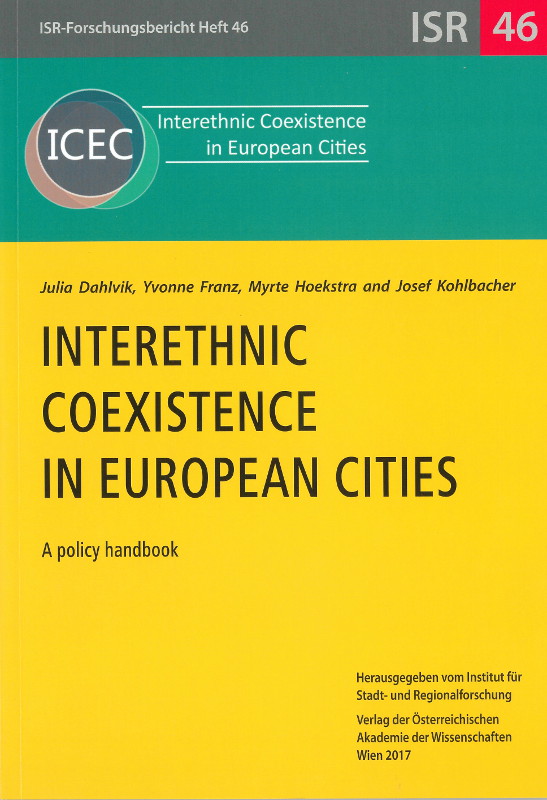
Interethnic Coexistence in European Cities, pp. 67-75, 2017/11/08
A policy handbook

“The neighbourhood is about trust and familiarity – exactly what local initiatives are doing.” In May 2017, the ICEC team in Vienna invited local residents, initiators, cooperation partners and local politicians to a final discussion of the research results. Nathalie BINDER, a co-initiator of the community garden “Matznergarten”11 in the 14th district, Florian BRAND, team member of the Urban Renewal Office for the districts 7/8/1612 and Markus RUMELHART, district mayor in the 6th district, reflected on their daily practices and effects at the neighbourhood level. Below is a selection of the most striking quotes from the debate. Reflection by Co-Initiator of the Community Garden: From the beginning, we had the vision of “Growing together” which became also our motto [for the Matznergarden]. We wanted to grow together with regard to members, but also in relation to personal growth. Of course, everyone had their own reason for joining the team, for instance the opportunity to harvest their own tomatoes. However, we all shared the same end-goal: we wanted to get to know people from the neighbourhood and to enable them to grow plants, shape their neighbourhood and talk to their neighbours. Reflection by Team Member of the Urban Renewal Office: In general, we identify in our work [on the neighbourhood level] a basic need for familiarity: familiar faces and places, as well as languages, sounds and smells. This might seem merely buzzwords. However, working at the neighbourhood level, you may translate this into concrete activities, for example, intercultural community cooking. This is why these initiatives are of such high importance: they create the small moments of familiarity in everyday life. […] We have experienced in various projects over the course of the last few years that the provision of space is one of the most important tools in our work. To a certain degree, you must provide “neutral ground” and openness [in the neighbourhood]. Reflection by District Mayor: You do not need a lot of space to create room. The most important part of this process is to get to know: is there enough commitment and motivation or ideas that can be picked up, strengthened and make more visible? And, are their specific needs [in the neighbourhood]? We’ve achieved our aim [as local politicians] when our partners become independent with their initiatives and do not need our support anymore. In addition – and here I am touching on the role of academia – we must ensure that we create sustainable knowledge, including manuals and recommendations for places that are not yet perfect. This is important to make change happen. Knowledge has to become more accessible in order to include more people into processes of co-creation.